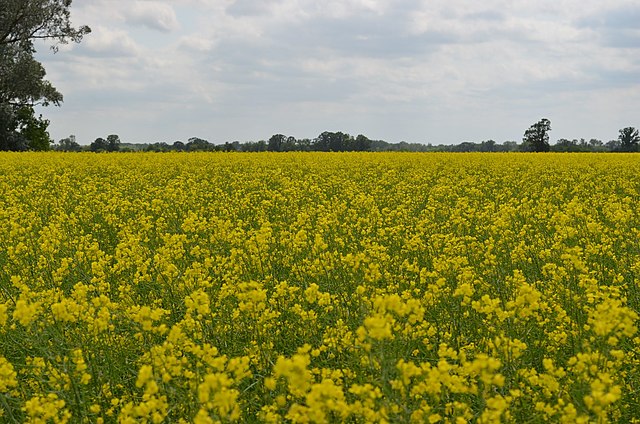On a quiet morning in March 2025, a jury in Georgia delivered a thunderclap verdict: $2.1 billion in damages against Bayer AG, the German pharmaceutical and agrochemical giant, over claims that its flagship weedkiller, Roundup, had caused cancer in a longtime user.
It wasn’t the first verdict. It likely won’t be the last. But it felt different — not only in size, but in symbolism. For a company that has long cast itself as a steward of science and food security, the judgment landed like a moral indictment. Roundup, once marketed as the miracle molecule of modern agriculture, had become a legal albatross.
Behind the scenes in Leverkusen, Bayer’s headquarters in Germany, the pressure is suffocating. Since acquiring Monsanto in 2018 for $63 billion, Bayer has been caught in a slow-moving corporate wildfire — trying to defend glyphosate’s legacy even as its share price craters and the lawsuits mount. At stake isn’t just one chemical, but the company’s future as a global player in food and farming — and perhaps more existentially, the public’s trust in scientific authority in the age of skepticism.
Now Bayer faces a painful question: should it continue defending glyphosate in U.S. courts, or retreat?
Crossroads in the Corn Belt
In February 2025, Bayer CEO Bill Anderson hinted that the company was reevaluating whether to remain the sole domestic manufacturer of glyphosate in the United States. Bayer currently mines phosphorus in Idaho, formulates the herbicide in Iowa, and finishes production in Louisiana. Walking away from this supply chain would be a drastic move — but perhaps less drastic than continuing to bleed billions.
Anderson described this moment as a “short-term window” to find a way forward. But the choices aren’t simple. If Bayer exits, it leaves a vacuum in the U.S. agri-chemical market that competitors may fill. If it stays, it risks more verdicts, more reputational damage, and further erosion of shareholder confidence.
Environmental activists, meanwhile, view Roundup as emblematic of industrial farming’s harms: soil degradation, biodiversity loss, and corporate control over seed and chemical markets.
Monsanto’s Shadow: A Culture Clash That Never Healed
The legal and financial chaos Bayer finds itself in was not purely accidental. It was foretold.
When Bayer acquired Monsanto in 2018, it inherited not only the company’s portfolio of seeds and chemicals — but also its long-standing reputation for secrecy, litigation, and a deeply American brand of corporate aggressiveness. Monsanto had been embroiled in controversies for decades: over genetically modified organisms (GMOs), over its role in Agent Orange production during the Vietnam War, and over its ferocious legal pursuit of farmers it accused of patent violations.
Bayer, with its German ethos of scientific rigor and understated diplomacy, believed it could absorb and reform the Monsanto legacy. But internally, the cultures clashed. What Bayer underestimated, critics say, was just how toxic Monsanto’s public image had become — particularly in Europe. The company didn’t just buy glyphosate. It bought a history of distrust.
Today, the Monsanto name is gone, scrubbed from branding. But in the courts of public opinion — and actual courts across America — its ghost looms large.
Roundup by the Numbers
- $63 billion – The amount Bayer paid to acquire Monsanto in 2018.
- 100,000+ – Number of lawsuits filed against Bayer in the U.S. related to Roundup exposure.
- 90% – Estimated share of U.S. corn, soy, and cotton crops treated with glyphosate-based herbicides.
- 20+ countries – Have imposed partial or complete bans on glyphosate, including Germany, Austria, and Mexico.
- 2023 – Year the European Union renewed glyphosate’s license, controversially extending it another 10 years.
- $5.5 billion – Bayer’s agriculture division earnings in 2023, making it one of the top players in global crop science.
When the Soil Speaks Back
There’s a strange kind of poetry in glyphosate’s unraveling. For decades, it was the chemical that conquered chaos — taming wild fields, fattening global harvests, and offering certainty to a farming world caught between climate volatility and population pressure. It was, in a sense, the illusion of control made real.
But control is a fragile thing. The soil has memory. The body keeps score. And truth — even when buried under patents, policy papers, and public relations campaigns — finds its way to the surface.
What Bayer now faces is not just litigation, but a reckoning with the past it inherited, and the future it wants to build. The glyphosate story reveals the cost of treating farming as a chemistry experiment, where every weed is a problem to be solved, rather than a system to be understood.
The next chapter in agriculture may still involve science — but perhaps not in the form of domination. Maybe it looks more like listening. To ecosystems. To farmers. To history.
Roundup promised clean fields. What it left behind is a world asking deeper questions.
